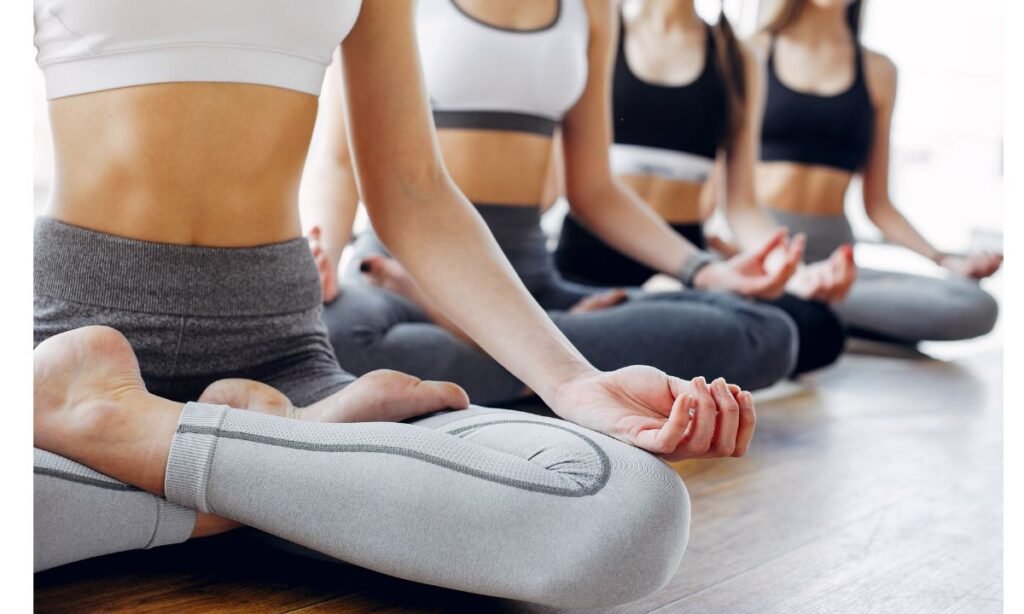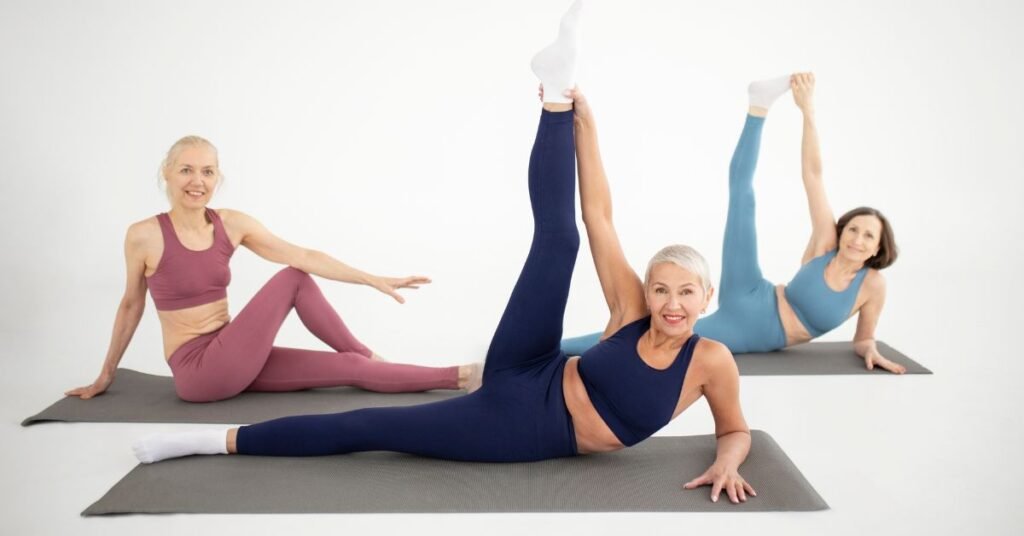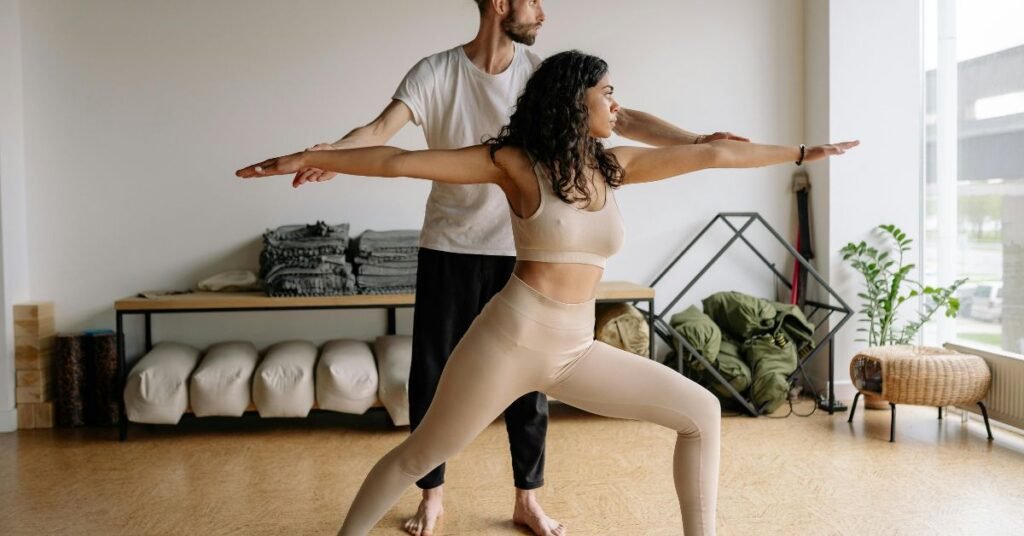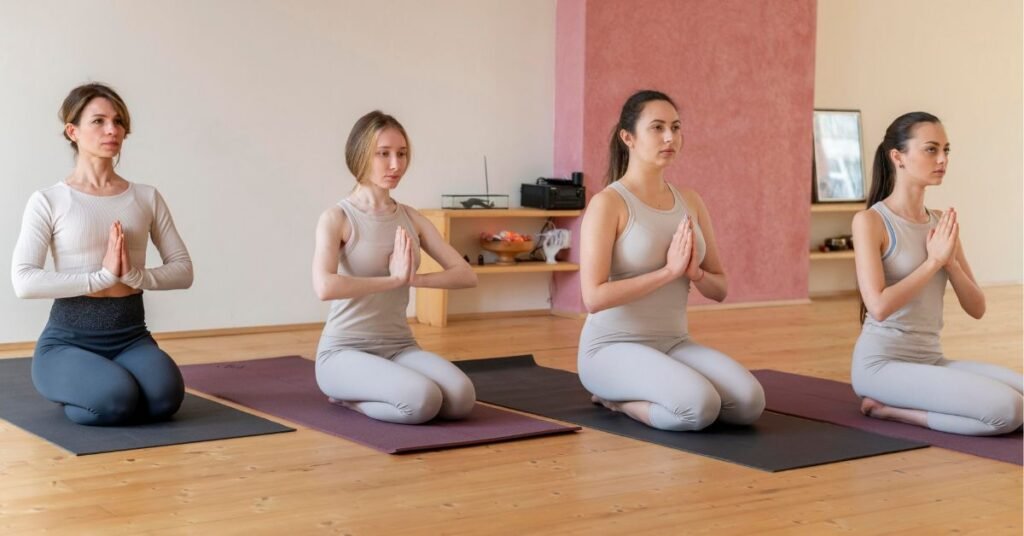The New Year is here, and with it comes a chance to hit the reset button on our lives, make fresh commitments, and explore new avenues for personal growth. For many, this means setting New Year resolutions — promises to improve ourselves somehow. If you’re a yoga lover or curious about diving into the practice, this year could be the best one yet to kickstart or revitalize your yoga journey.
Whether you’re a beginner or an experienced yogi, there are always ways to deepen your practice, stay motivated, and improve your well-being. In this blog post, we’ll share 5 New Year yoga resolutions that will help you take your yoga practice to the next level, with a little humor, inspiration, and practical tips along the way.
1. Make Yoga a Daily Ritual (Even If It’s Just 10 Minutes)
We all know that life can get busy. Work, family, social commitments, and everything in between can sometimes make it impossible to carve out time for your yoga mat. But here’s the thing: even a little bit of yoga every day can go a long way.
Why This Resolution Matters:
Consistency is key to building any healthy habit, and yoga is no different. When you practice yoga daily (even for a short period), your body gets used to the movement, your mind finds calm, and you start reaping the benefits of flexibility, strength, and stress reduction.
How to Make It Happen:
- Start Small: If you’re new to daily yoga, begin with just 10 minutes a day. This can be a simple sequence of stretches or a gentle flow to wake up your body.
- Set a Routine: Choose a specific time each day to practice. Whether it’s first thing in the morning, during lunch, or before bed, setting a routine helps make yoga a non-negotiable part of your day.
- Use Online Resources: There are plenty of free online classes and apps that offer short, guided yoga sessions. You don’t need to go to a studio to stay on track.
Pro Tip:
Even on those days when you’re feeling super busy, commit to at least 5 minutes. That way, you’re building the habit, and you’ll feel better for doing something, even if it’s a mini-practice.
2. Focus on Your Breath (It’s More Powerful Than You Think!)
As you embark on your yoga journey this year, take a moment to recognize the power of your breath. It may seem simple, but proper breathing is the foundation of a strong yoga practice. In fact, pranayama (breathing exercises) is just as important as the poses themselves.
Why This Resolution Matters:
Breath is your anchor. When you focus on it, it helps calm your mind, reduce stress, and improve your focus and endurance during yoga. It’s your personal tool for achieving mindfulness and grounding yourself both on and off the mat.
How to Make It Happen:
- Try Deep Breathing Exercises: Set aside a few minutes before, during, or after your practice to focus on deep, conscious breathing. Try inhaling for a count of 4, holding for 4, exhaling for 4, and pausing for 4. This is called “Box Breathing.”
- Incorporate Breath with Movement: Make sure to match your breath with the flow of your movements. Inhaling when opening the chest or stretching up, exhaling when folding or twisting — this rhythm will help you move deeper into your practice and stay centered.
- Mindfulness Beyond the Mat: Practice mindful breathing throughout your day. Whether you’re feeling stressed, anxious, or just need a moment of calm, deep breaths can reset your state of mind.
Pro Tip:
When you feel your thoughts racing or tension building, pause and focus on your breathing. It’s a great tool for getting back to the present moment.
Readmore: Yoga for Better Sleep Simple Poses
Readmore: The Best Foods for a Yogic Diet
Readmore: Evening Yoga Poses to Unwind After a Long Day
3. Set a Goal for Flexibility (And Celebrate Small Wins)
Flexibility isn’t just about touching your toes or performing the perfect split. It’s about making gradual progress and being kind to yourself as you stretch your body and mind.
Why This Resolution Matters:
Flexibility in yoga is often seen as one of the main goals — and for a good reason. It enhances your range of motion, improves posture, prevents injury, and helps you achieve deeper stretches and poses. But flexibility doesn’t happen overnight. It’s a long-term goal that requires patience and dedication.
How to Make It Happen:
- Set Realistic Goals: Start with one area of your body where you want to improve flexibility. Maybe it’s your hamstrings, hips, or shoulders. Set a goal to practice specific stretches targeting that area.
- Incorporate Gentle Stretching: Don’t rush into deep stretches. Focus on gentle, gradual stretching and listen to your body. Always warm up before you dive into more intense stretches.
- Celebrate the Small Wins: Did you get a little closer to touching your toes? Did your back feel more open in a particular pose? Celebrate it! Small victories add up to big improvements over time.
Pro Tip:
Remember, yoga isn’t about achieving the perfect pose. It’s about the journey, not the destination. Be kind to yourself and embrace where you are right now.
4. Cultivate a Mindful Practice (Yoga is More Than Poses)
Yoga is not just about physical postures. It’s a holistic practice that integrates the body, mind, and spirit. In the hustle and bustle of everyday life, it’s easy to forget about the mental and emotional benefits yoga offers. This year, make a resolution to truly embrace mindfulness in your practice.
Why This Resolution Matters:
Mindfulness helps you live in the present moment, which can reduce stress, enhance your mental clarity, and bring a sense of peace to your life. By cultivating mindfulness on the mat, you can carry that sense of calm with you throughout your day.
How to Make It Happen:
- Focus on the Present Moment: When you step onto your mat, leave all distractions behind. Focus on your breath, the movement of your body, and the sensations you feel. Avoid thinking about your to-do list or what’s coming next.
- Practice Meditation: Incorporate short meditation sessions before or after your practice to calm your mind and center yourself. Guided meditations can be especially helpful.
- Let Go of Perfection: Yoga isn’t about perfection. It’s about self-acceptance and letting go of judgments. Allow yourself to be imperfect and embrace the process.
Pro Tip:
Whenever you feel your mind wandering, gently bring your attention back to your breath or the sensations in your body. That’s where the magic happens.
5. Join a Yoga Community (Find Your Tribe)
Whether you prefer practicing solo or with others, yoga is often more enjoyable when you share the experience with a like-minded community. Finding a yoga tribe can motivate you, support your growth, and keep you inspired throughout the year.
Why This Resolution Matters:
A yoga community helps you stay accountable and makes your practice more social and fun. Plus, you’ll have the chance to share experiences, ask questions, and learn from others.
How to Make It Happen:
- Find a Local Studio or Online Group: Search for a local yoga studio that aligns with your goals or join online yoga communities to connect with fellow practitioners.
- Attend Workshops or Events: Many yoga studios offer workshops or special events where you can deepen your practice and meet others.
- Get Social on Social Media: Follow yoga teachers, influencers, or hashtag communities to stay inspired and motivated.
Pro Tip:
Even if you prefer solo practice, occasionally participating in a class or group session can be a great way to build camaraderie and boost your energy.
Final Thoughts
The New Year is the perfect time to commit to a yoga practice that nurtures both body and mind. Whether you’re aiming for daily consistency, better breathwork, more flexibility, mindfulness, or a sense of community, these 5 resolutions will guide you toward a fulfilling and enriching yoga journey.
Remember, yoga is a lifelong practice, not a competition. So, be patient, be kind to yourself, and celebrate every step you take on your path. May this year be your best yet — filled with peace, strength, and a deeper connection to yourself. Happy New Year, and Namaste!
Readmore: Unlock Squatting Garland Pose
Readmore: Seated Forward Bend Pose (Paschimottanasana)
Frequently Asked Questions (FAQ)
1. Do I need to be flexible to start yoga?
No, flexibility isn’t required! Yoga helps improve flexibility over time, so just start where you are and progress gradually.
2. How often should I practice yoga?
Start with 2-3 times a week, and increase as you feel comfortable. Even 10 minutes a day can make a difference.
3. Can yoga help with stress?
Yes, yoga is great for reducing stress and anxiety. It promotes relaxation through breathwork and mindfulness.
4. What type of yoga is best for beginners?
Gentle styles like Hatha, Vinyasa, or Restorative yoga are great for beginners.
5. Do I need special equipment?
A yoga mat is the only essential item. Blocks and straps are optional for added support.
6. Can I practice yoga with an injury?
Consult your doctor first, but yoga can be therapeutic with the right modifications from an instructor.
7. How soon will I see results?
With regular practice, you may notice improvements in flexibility, strength, and stress reduction in just a few weeks.
8. Can yoga help with weight loss?
While yoga is not typically for weight loss, styles like Vinyasa can help tone muscles and support overall wellness.

Sonu is a passionate yoga teacher with over 6+ years of experience helping individuals find balance, strength, and inner peace through the transformative power of yoga. As the creator of Pure Yoga Vibes, Sonu shares expert insights, inspiring practices, and a wealth of knowledge to support your wellness journey. Dedicated to creating a space for growth and mindfulness, Sonu’s mission is to make yoga accessible and enjoyable for everyone. For inquiries or collaborations, feel free to reach out at contact@pureyogavibes.com.



